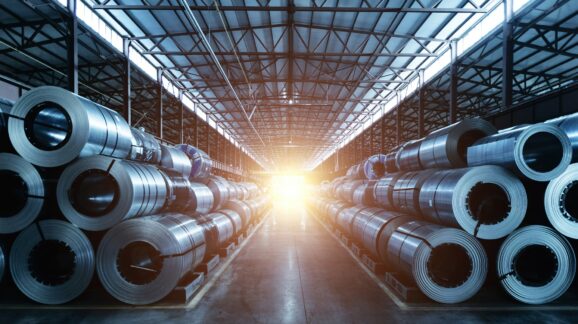The good and bad of Nippon Steel deal

Photo Credit: Getty
There is good and bad in everything. This includes Nippon Steel’s planned buyup of US Steel, which politicians from both parties are criticizing. The good side of this story is that the US remains a magnet for foreign investment. The bad side is yet another example of why tariffs and industrial policy usually backfire.
First, the good. The US is the world’s biggest recipient of foreign direct investment. That helps drive innovation, entrepreneurship, and job creation across the country. Investment makes US businesses more competitive, whether the investors live across town or across an ocean.
One reason why foreign investors keep sending their wealth to America is that the US has freer and more stable economic and political institutions than most other countries, even after several years of stress tests ranging from a pandemic to the January 6 attack on the Capitol. The most recent Fraser Institute Economic Freedom of the World index ranks the US fifth out of 165 countries on economic freedom.
US Steel’s story is less rosy. Once one of the world’s largest corporations, it is now just the 573rd largest company in the US, as George Will pointed out. This decline happened in part because tariffs and import restrictions have shielded it from having to keep up with the rest of the world’s advances.
Nippon Steel has more experience competing in a freer market. As a result, it is now the world’s fourth-largest steel producer. It sees an opportunity to bring US Steel up to the rest of the world’s standards, benefiting both itself and US Steel. Instead of closing US Steel, it wants to modernize it.
That is good news for US Steel’s employees and shareholders. It is also good news for every industry that uses steel. Construction, autos, and electronics could all become a little bit better and a little bit more affordable because Nippon Steel saw a way to make an existing producer better.
But there is a bad side. Politicians have showered US Steel with favors for years. Buy American requirements have been a part of federal acquisitions for decades, especially for steel-intensive military equipment. Former President Trump enacted a 25 percent tariff against most foreign steel. President Biden has mostly kept them in place.
The Trump-Biden tariffs likely saved about 1,000 steel industry jobs, plus about 1,300 aluminum-producing jobs, at a cost about $620,000 per job. Not only that, but higher metal prices hurt downstream industries, to the tune of about 75,000 lost jobs. Saving one job at a cost of 36 other jobs, plus $620,000, is a bad deal.
It is easy to see 2,300 saved jobs and call a policy a success. It is harder to see those 75,000 lost jobs, scattered across the economy. It is even more difficult to see what people could have done with the $620,000 each job cost. What would people have bought or invested in with that money instead? We will never know. This seen-vs.-unseen dynamic is why industrial policy remains popular despite its poor track record.
It is important for policymakers to learn the right lessons from America’s success at attracting foreign investment, and the failures of its recent turn to protectionism and industrial policy. America’s relative freedom and stability are why we enjoy economic dynamism. No wonder investors around the world want to be part of it. Protectionism, industrial policy, and nationalism are eroding that dynamism—especially when directed against Japan, one of our strongest allies against China, which is a genuine threat.
Maybe Nippon Steel’s investment in US Steel will work out. Maybe it won’t. But the company should be allowed to try. Its odds are better than the sure failures we have already experienced from bipartisan experiments in industrial policy.